
Types of Bunsen burner flames YouTube
1. Get a Bunsen burner and a piece of rubber tubing for Bunsen burners. Check for any cracks or damage on the rubber tubing. Get a new piece of tubing if yours is damaged. Attach one end of the tubing to the gas source on the laboratory bench and the other end to the gas inlet on the Bunsen burner. 2.
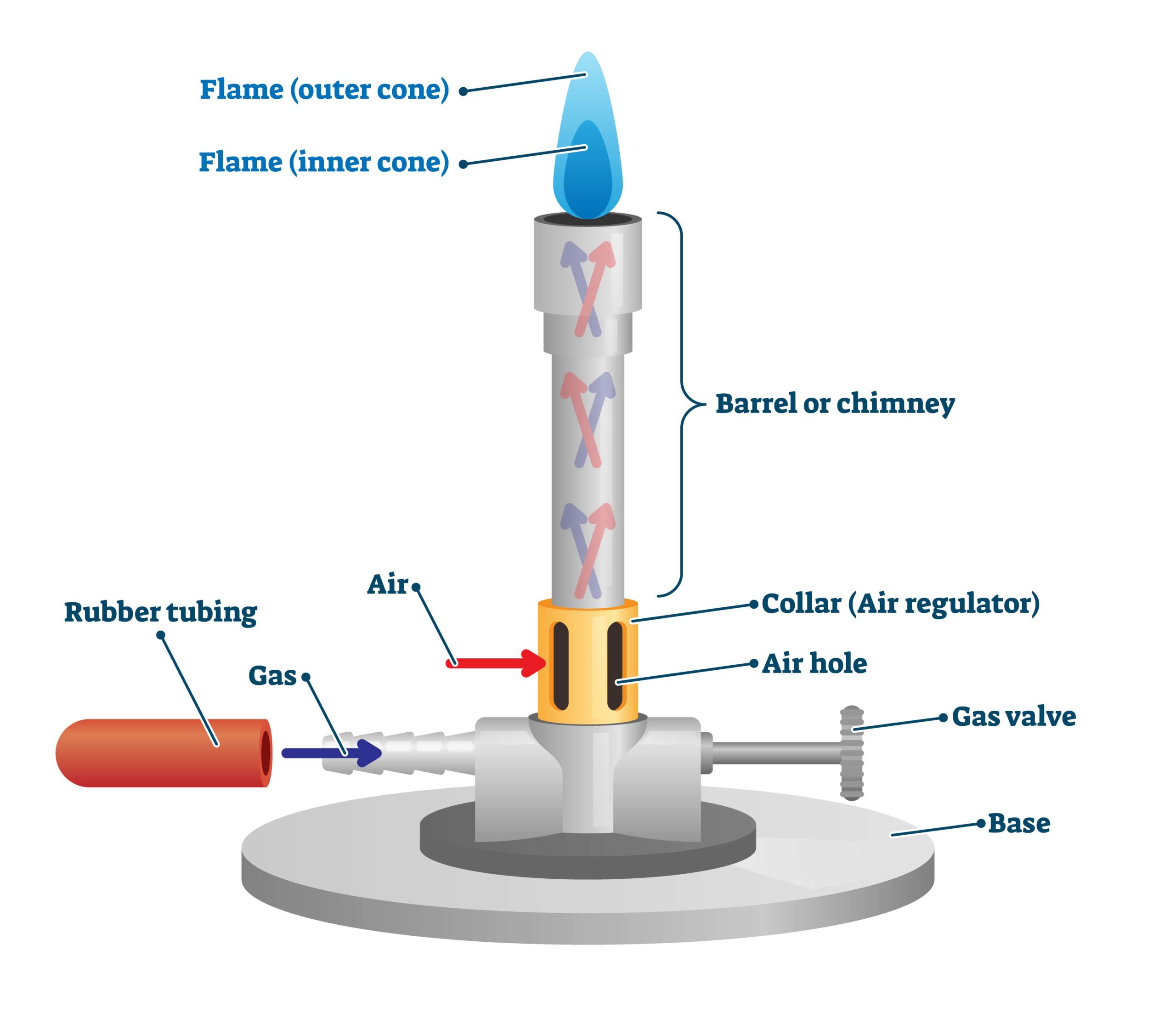
Bunsen Burner Function ShawnatRich
It burns with a pale blue flame, the primary flame, seen as a small inner cone, and a secondary, almost colourless flame, seen as a larger, outer cone, which results when the remaining gas is completely oxidized by the surrounding air. cone of a Bunsen burner flame

PPT The Bunsen burner PowerPoint Presentation, free download ID6216773
However, one should be familiar with the different parts of a burner to handle it safely and understand how it works. An efficient Bunsen burner is purely metallic (except the gas tubing) and has five main parts: 1. Barrel or stack: It is approximately 5 inches long to raise the flame to a suitable height for heating.

Transparent Bunsen Burner Clipart Science Bunsen Burner Diagram, HD Png Download , Transparent
The most common flame atomization device, which is illustrated in Figure 6.2A. 1 6.2 A. 1, is known as a laminar flow or pre-mix burner. Note the unusual design of the burner head, which instead of having the shape of a common Bunsen burner, has a long, thin flame that is 10 cm long. Radiation from the course passes through the 10 cm distance.
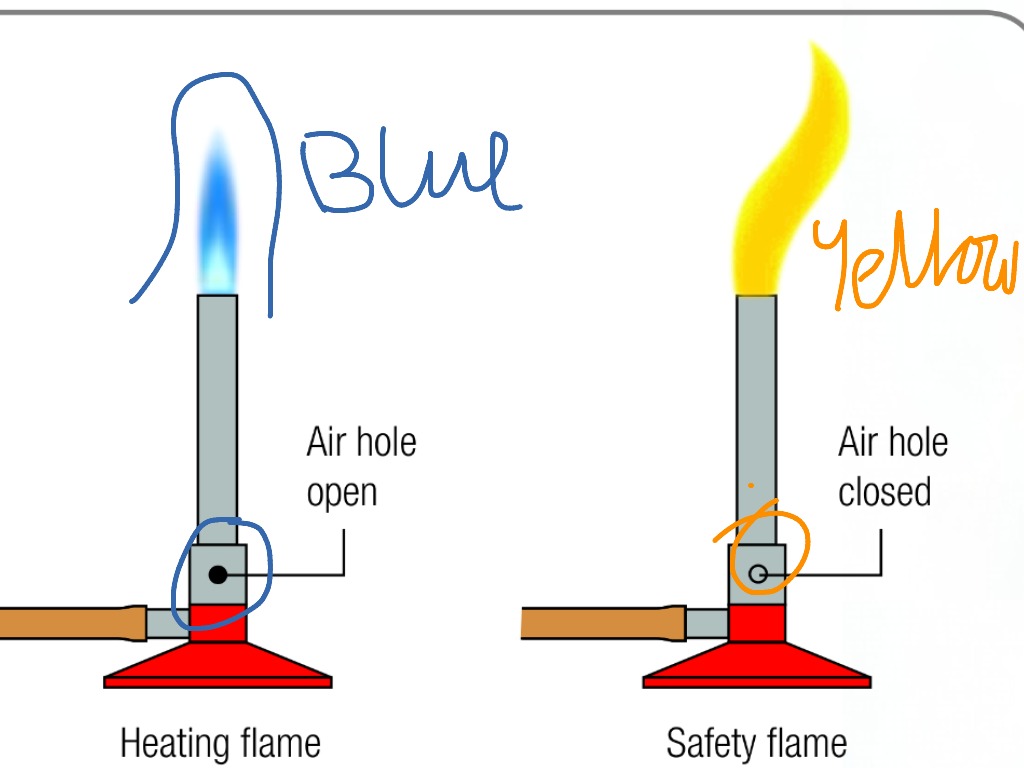
Science project no.4 Science, Bunsen Burner ShowMe
A typical diagram is shown below: In this article you'll learn: What are the parts of a Bunsen burner? What is the function of a Bunsen burner? How do you use a Bunsen burner? What is the hottest part of a flame on a Bunsen burner? Let's Get Started…! Parts of Bunsen Burner and Their Functions
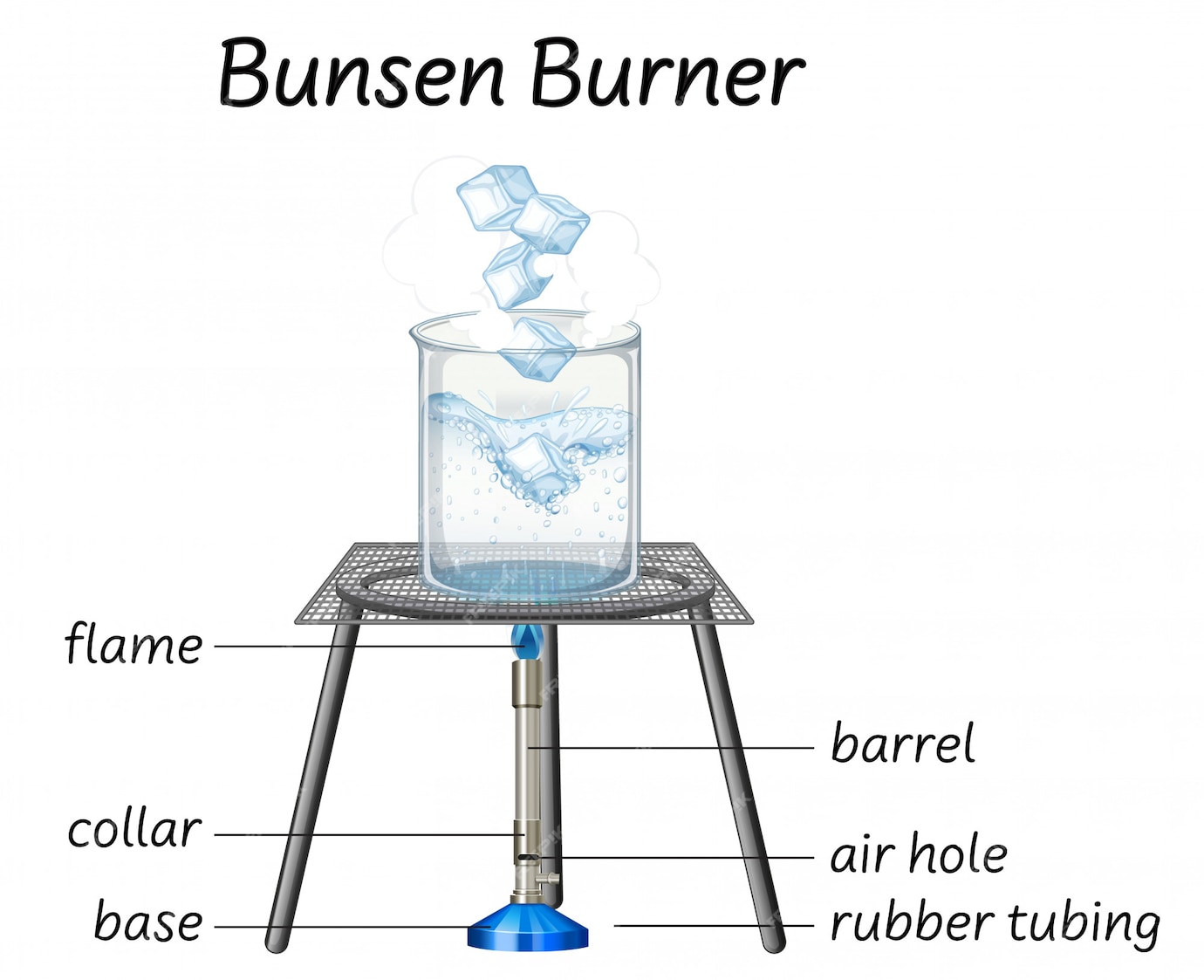
Free Vector Science bunsen burner diagram
Bunsen burner is a gas burner that produces smokeless, nonluminous flame used for heating, sterilizing, and combustion purposes in laboratory experiments. It was named after Robert Bunsen, a German scientist who designed it in 1857. A.D. Bunsen burner ignites by the fusion of fuel and air (oxygen).

Science bunsen burner diagram illustration Stock Vector Image & Art Alamy
To light a burner; Bunsen burners are generally used to rapidly heat high-boiling liquids with low flammability (such as water). Safety note: It is important to know that they can reach temperatures of approximately \(1500^\text{o} \text{C}\),\(^5\) and can easily ignite most organic compounds. If an apparatus is improperly set up, or if there is a small gap that allows organic vapors to.
Bunsen Burner Flame Diagram Wiring Service
Diagram below the three distinct flames you can create with the Bunsen Burner: In your diagram label the different temperature regions, if necessary. Flame #1: Temp: ________________ Flame #1 Diagram Color: ________________ Observations: Flame #3 Diagram Flame #2: Temp: ________________ Color: ________________ Observations: Flame #2 Diagram

Bunsen Burner Labeled Diagram 스톡 일러스트 202979323 Shutterstock
Bunsen Burner is a kind of gas burner that creates a safe, smokeless, hot, and non-luminous flame which can be used for various scientific experiments and research. In 1857, German scientist Robert Bunsen and his lab assistant Peter Desaga invented the Bunsen burner and named it after his surname.
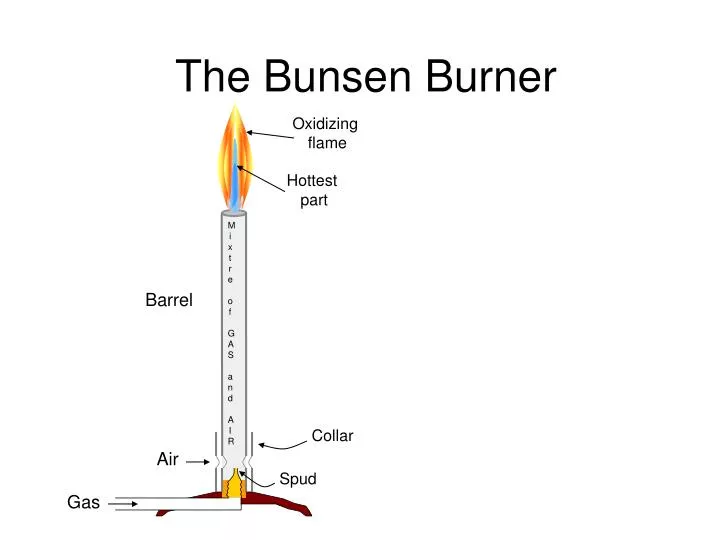
PPT The Bunsen Burner PowerPoint Presentation, free download ID5832205
Bunsen Burner: Definition, Parts, Types and Uses. February 22, 2023by Adeel Abbas. Written By Adeel Abbas. Bunsen Burner is a laboratory device that is widely used in scientific research, teaching, and experimentation. It is a simple gas burner that produces a hot, blue flame that is perfect for heating, sterilizing, and combustion purposes.

6. Label the given diagram of Bunsen burner with the phrases given below. Brainly.in
CH4 + 2O2 Equation 1 CH4 + O2 CO2 + 2H2O + heat C + 2H2O + heat Equation 2a CH4 + 3⁄2O2 → CO + 2H2O + heat Equation 2b The modern Bunsen burner has changed very little from Robert Bunsen's original design.

How To Draw Bunsen Burner step by step tutorial YouTube
A Bunsen burner is a type of gas burner that is used in many chemistry procedures in a laboratory setting. It is used to heat substances, to combust substances, and to sterilize objects on high.
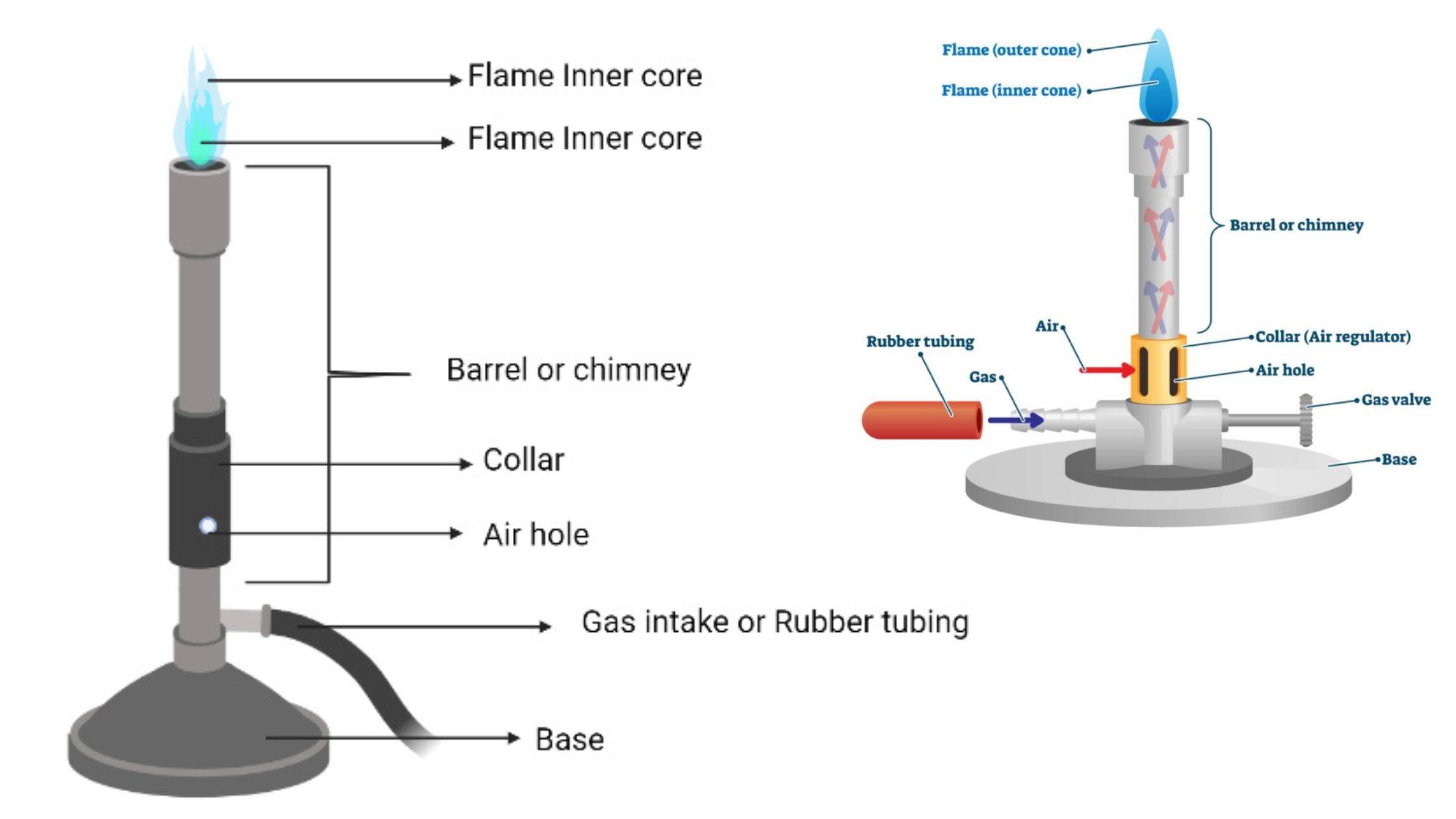
Bunsen Burner Definition, Principle, Parts, Functions
The structure of Bunsen cone flame tops is studied using the thermal diffusion flame model. Assuming a strong temperature dependence of the reaction rate, the shape of the flame front as well as the temperature distribution at the front are found. It is shown that for the case in which the Lewis number of the limiting component is greater than.
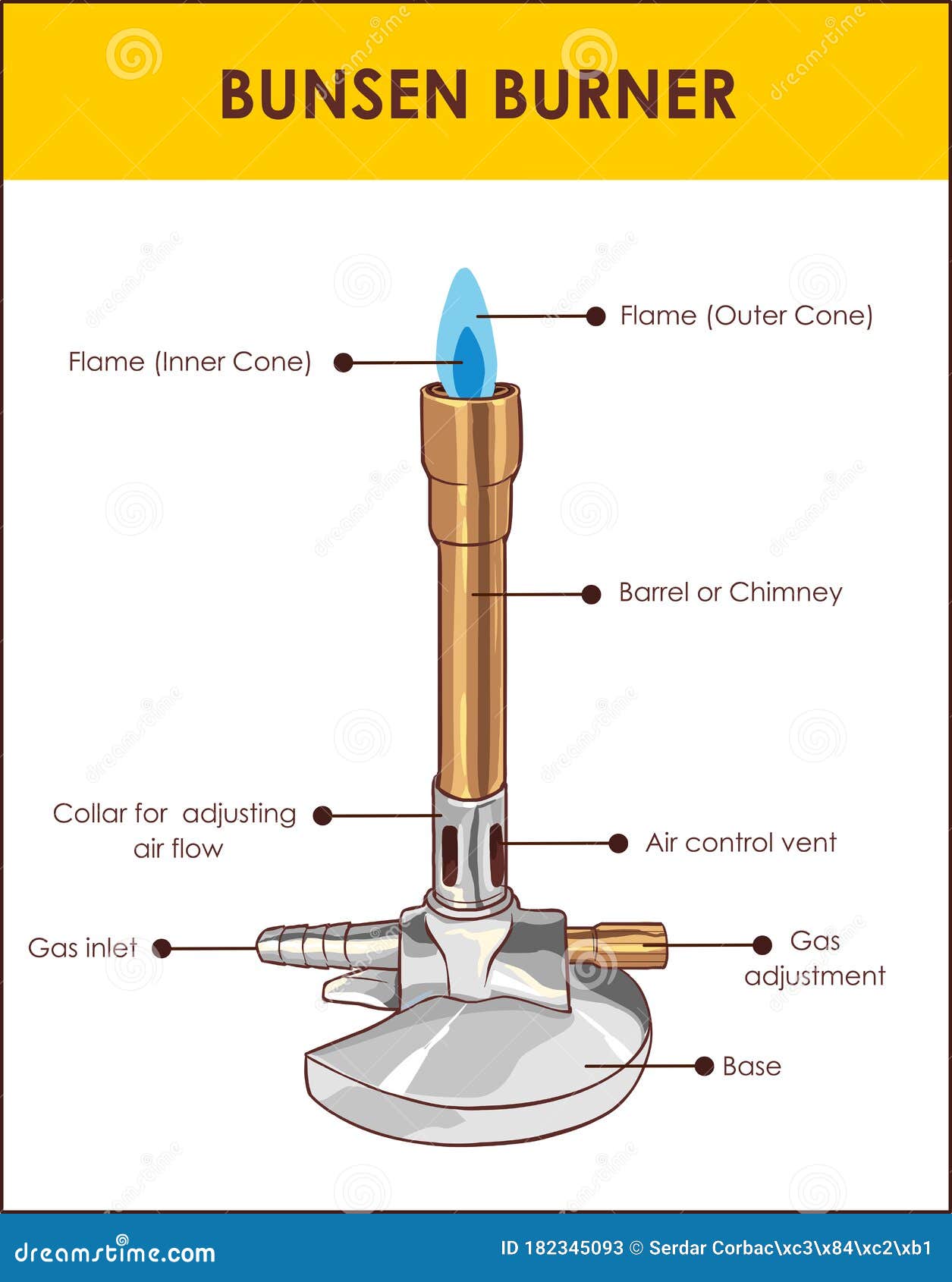
Parts Of A Bunsen Burner Diagram Images and Photos finder
A Bunsen burner is a laboratory device that plays a crucial role in scientific experiments and research. It was invented by German scientist Robert Bunsen in collaboration with his lab assistant Peter Desaga in 1857. The burner was named after Bunsen, recognizing his contribution to its design and development.

33 Label The Parts Of The Bunsen Burner Labels 2021
Watch and learn how to light a bunsen burner and observe the different flames produced by a bunsen burner. Luminous flame and non-luminous flame. Learn more. [email protected] +254721524786 . Home; Chemistry. Draw and label the diagram of a luminous flame as seen in the video. Why should the collar be closed for this flame to occur?

How to Draw Bunsen Burner labelled Diagram Bunsen Burner lab Equipment ! YouTube
The Bunsen burner flame diagram shows the different zones of a flame that can be obtained from a Bunsen burner. These zones include the inner blue cone, the outer blue cone, and the luminous zone. Each zone has different characteristics and temperatures, making them suitable for different purposes in scientific experiments and other.